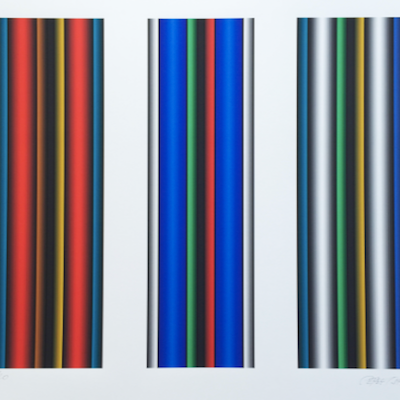
What is a Lithograph?
Lithography is a printing method based on the principle that water and oil do not mix. It can be used to print artwork or text onto paper or other suitable materials. Traditionally, an image was drawn with wax, fat, or oil onto a lithographic limestone surface or plate. Today, metal plates and other surfaces are also used in lithographic printing.
Artwork by Dario Perez-Flores- Show All
- Established
- Discoveries
ARTWORKS RELATED TO LITHOGRAPH
Joan Miró
Untitled (from Les demeures d'hypnos portfolio), 1976
Limited Edition Print
Lithograph
Inquire For Price
Roy Lichtenstein
Before the Mirror (from Mirrors of the Mind portfolio), 1975
Limited Edition Print
Lithograph
Inquire For Price
Alexander Calder
Red, Yellow and Blue Coral with Shells , c. 1970
Limited Edition Print
Lithograph
Inquire For Price
Frank Stella
Honduras Lottery Co (from Multicolored Squares), 1970
Limited Edition Print
Lithograph
USD 9,650
Frank Stella
Gran Cairo (from multicolored squares), 1970
Limited Edition Print
Lithograph
USD 7,000
Frank Stella
Newstead Abbey (From Aluminium series), 1970
Limited Edition Print
Lithograph
Inquire For Price

Also referred to as Earth Art, Earthworks, or Environmental Art, Land Art is a sculptural movement that involves creating artworks that integrate conceptual or physical elements of the earth or landscape into the finished piece. These works often interact directly with the environment, using natural materials and settings to explore themes related to nature, place, and time

Lowbrow is a derogatory term that refers to certain forms of popular culture. It describes an art movement that began in Los Angeles in the 1970s. The term lowbrow originally refers to a person with little intellectual or refined taste. The Lowbrow art movement, also known as Pop Surrealism, blends elements of underground comics, punk music, hot rod culture, and other subcultures, often with a sense of humor and irony.

Readymade is the term coined by French artist Marcel Duchamp to describe artworks created from manufactured objects. Duchamp selected ordinary, functional items that he felt had visual indifference, turning them into art simply by choosing and presenting them in a new context. This concept challenged traditional notions of art and continues to influence artists who adopt similar approaches today.




















